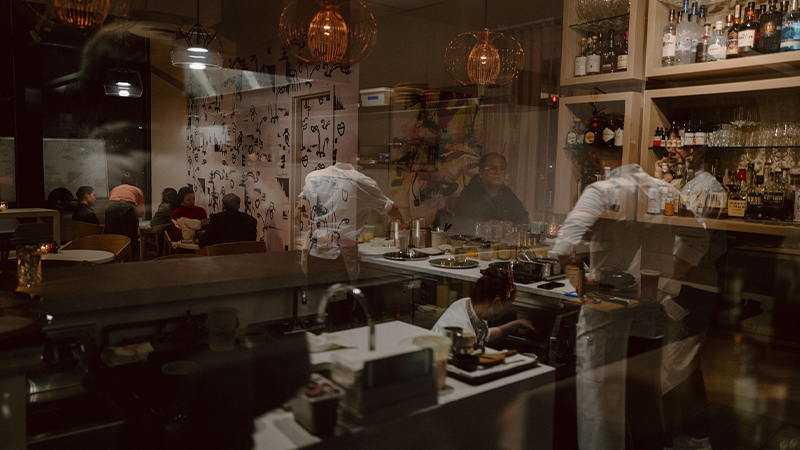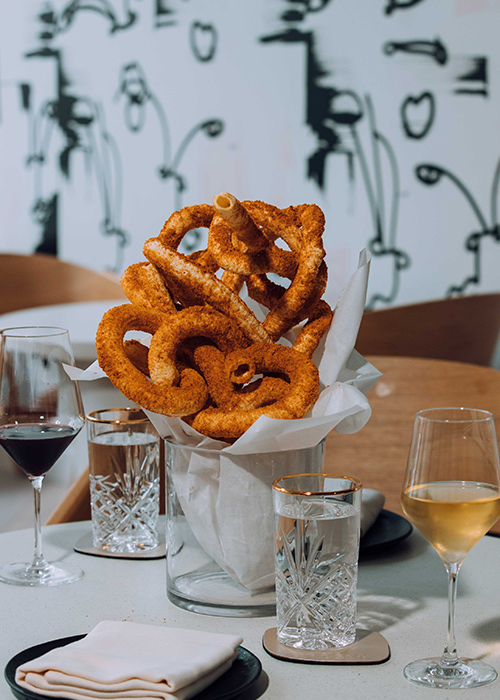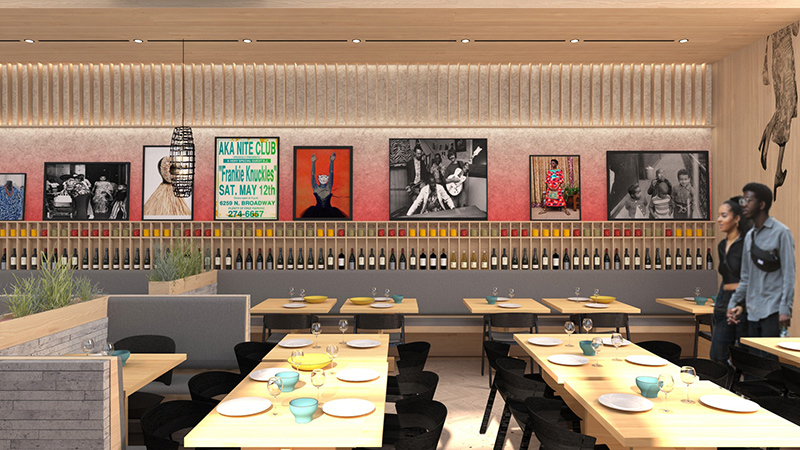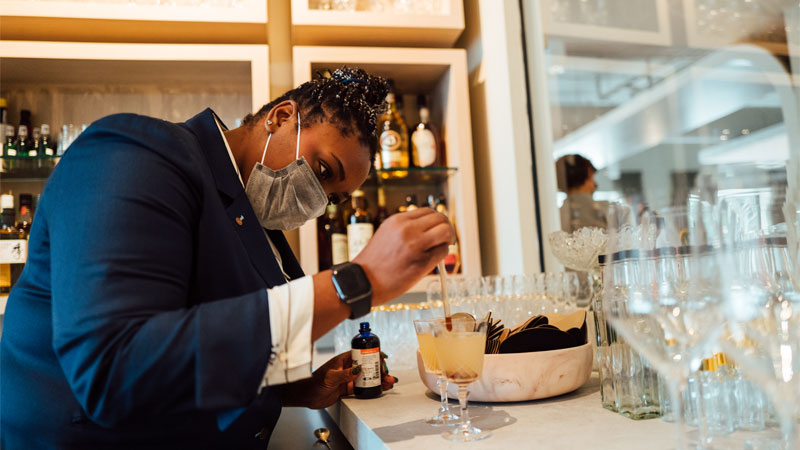When Tia Barrett (formerly of the Aviary and now-shuttered Entente) was tapped to develop the beverage program for Esmé, a Michelin-starred fine dining restaurant in Chicago, the beverage director began taking stock of the varied trends she’d encountered over her years working in the industry. One glaring, recurring theme quickly emerged: a dearth of representation across drink suppliers. Esmé opened in 2021, and Barrett’s thoughtfully crafted beverage list teemed with bottles from Black, brown, and women producers, skillfully complementing executive chef Jenner Tomaska’s artist-inspired tasting menu.
At its core, Barrett’s list is a meditation on how beverages can serve as a platform where representation, equity, philanthropy, and environmental and social justice can seamlessly intersect. That ethos is an extension of Esmé, a space commonly compared to an art gallery where pieces from and collaborations with Chicago’s leading class of contemporary artists like Amanda Rivera and Paul Octavious are on full display as the restaurant aims to root itself in its community.

Highlighted on Esmé’s menu is Rajeev Samant’s India-based Sula Vineyards Chenin Blanc, as well as Oregon’s Ricochet rosé from which 5 percent of sales are donated to both local and regional nonprofits that help people facing hardship; there’s also an IPA from Moor’s Brewing Company, a new Black-owned, Chicago-based brewery. One of Barrett’s favorites is Wade Cellars’ Oakville Cabernet Sauvignon. “That wine is kind of everything. We’re talking about someone who’s from Chicago, gives back to philanthropy, is in all the right growing areas,” she says. “But why isn’t this what everybody’s carrying? When I tell you, I enjoy it better than most Cabernets that I’ve had. It’s got the right amount of fruit. It’s high tannin, like I have to decant it the first thing when I walk in the building because it is tight. And as soon as it opens up, it is luscious. It is a food wine.”
Barrett’s social good-driven drinks program is the type of refreshing, unexpected characteristic of tasting menus at fine dining establishments like Esmé, an arena where innovation rules. Take Tomaska’s caviar ice cream as an example. “The caviar dish is probably the most iconic thing that we’ve done so far,” says Barrett. Osetra caviar scooped atop sweet potato ice cream with miso caramel and celery root hot sauce. And Barrett’s lavish pairing was just as surprising. “Everyone assumed I was going to pair caviar with Champagne, and I went opposite with a super non-traditional American sake,” she says.

Yet, for some, reconceptualizing wine pairings is where the line is drawn, and crossing it is considered taboo. It’s a mindset that Barrett wholeheartedly rebuffs, asking us to question our preconceived notions and ask ourselves: “Why do I enjoy these [drinks]? Am I enjoying it because I’m told to? Or I’m enjoying it because the media says that it’s great?” She remembers one diner who waved her over to their table and brashly called into question whether her wine pairings held any value. Whether intentional or not, such moments exemplify the ways in which the expertise of women and Black and brown people, particularly in wine and fine dining, is often called into question. Barrett quickly recalculated the numbers. They panned out –– again. “For every two people who love what you do, there’s one who hates it,” she says. “You go through the internal battle of trying to figure out — ‘Is this worth it? Am I doing what’s right?’”
But Barrett is in good company. Several of her industry colleagues are making parallel strides; sommeliers Yannick Benjamin and Mara Rudzinski of Peruvian-inspired Contento in New York’s East Harlem give social impact wines top billing, while sommelier Derrick Westbrook expertly curated a wine list featuring producers who are women and people of color at the newly opened Bronzeville Winery in Chicago. Supporting these groups is one way that members of the food and beverage industry are putting action behind words following calls for substantive change and restructuring to create a more equitable industry. Still, Barrett says that countering the status quo is “100 percent difficult.”

Barrett’s drink list changes every few months in tandem with Tomaska’s menu. She’s on her third iteration of the drink program and she admits that she’s had to edit her nearly 60-bottle list to appease the traditionalists. “We went from [a list that was] 100 percent people of color, woman-owned, philanthropy, sustainable, organic, all of those things,” she says. “Now I’m at like 75 percent and then I sprinkle in the classics because some people just want the names that they know, and I have to accept that.” The scales of hospitality will always teeter between passion and profit.

Barrett advises anyone looking to diversify their beverage program to prepare to do some legwork as most small, independent producers don’t have a force of salespeople like bigger brands do. And when you find something that you like, commit to it early, as supply from boutique producers can be scarce. Buy-in and top-down support is also critical. “[Tomaska] truly lets me do what I want. You don’t get a boss and a partner in anything like that very often,” Barrett notes. And she’s reaching back as a mentor hoping to inspire the next generation of beverage professionals. “I want someone beneath me who’s younger than me to be able to say ‘I can do that. I can do more than that,’” she says. The enthusiasm Barrett and her team have for the work they’re doing shines through as they chat with guests, encouraging them to explore new things and to color outside of the lines.
This story is a part of VP Pro, our free platform and newsletter for drinks industry professionals, covering wine, beer, liquor, and beyond. Sign up for VP Pro now!
